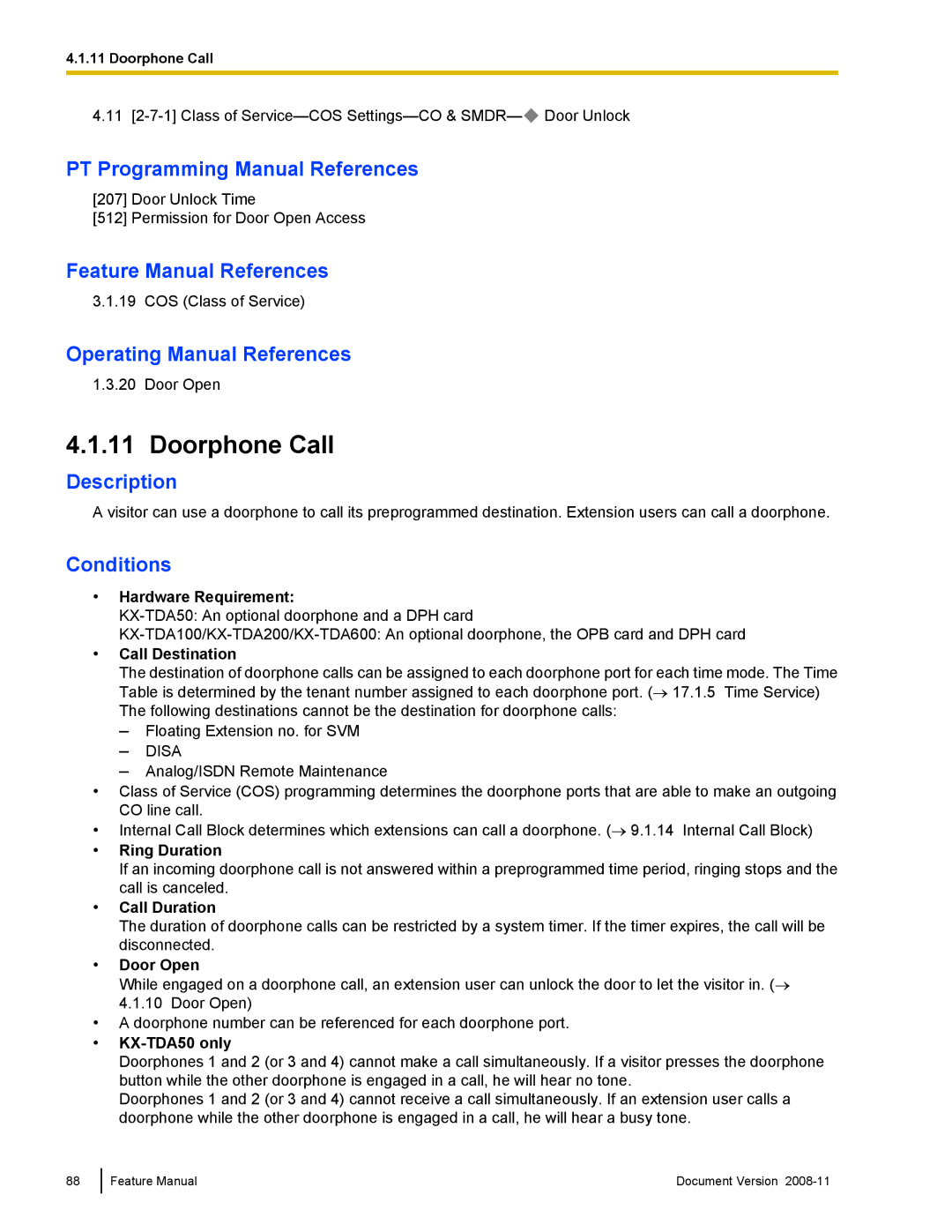
4.1.11Doorphone Call
4.11![]() Door Unlock
Door Unlock
PT Programming Manual References
[207] Door Unlock Time
[512] Permission for Door Open Access
Feature Manual References
3.1.19 COS (Class of Service)
Operating Manual References
1.3.20Door Open
4.1.11Doorphone Call
Description
A visitor can use a doorphone to call its preprogrammed destination. Extension users can call a doorphone.
Conditions
•Hardware Requirement:
•Call Destination
The destination of doorphone calls can be assigned to each doorphone port for each time mode. The Time Table is determined by the tenant number assigned to each doorphone port. (→ 17.1.5 Time Service) The following destinations cannot be the destination for doorphone calls:
–Floating Extension no. for SVM
–DISA
–Analog/ISDN Remote Maintenance
•Class of Service (COS) programming determines the doorphone ports that are able to make an outgoing CO line call.
•Internal Call Block determines which extensions can call a doorphone. (→ 9.1.14 Internal Call Block)
•Ring Duration
If an incoming doorphone call is not answered within a preprogrammed time period, ringing stops and the call is canceled.
•Call Duration
The duration of doorphone calls can be restricted by a system timer. If the timer expires, the call will be disconnected.
•Door Open
While engaged on a doorphone call, an extension user can unlock the door to let the visitor in. (→ 4.1.10 Door Open)
•A doorphone number can be referenced for each doorphone port.
•
Doorphones 1 and 2 (or 3 and 4) cannot make a call simultaneously. If a visitor presses the doorphone button while the other doorphone is engaged in a call, he will hear no tone.
Doorphones 1 and 2 (or 3 and 4) cannot receive a call simultaneously. If an extension user calls a doorphone while the other doorphone is engaged in a call, he will hear a busy tone.
88
Feature Manual | Document Version |
